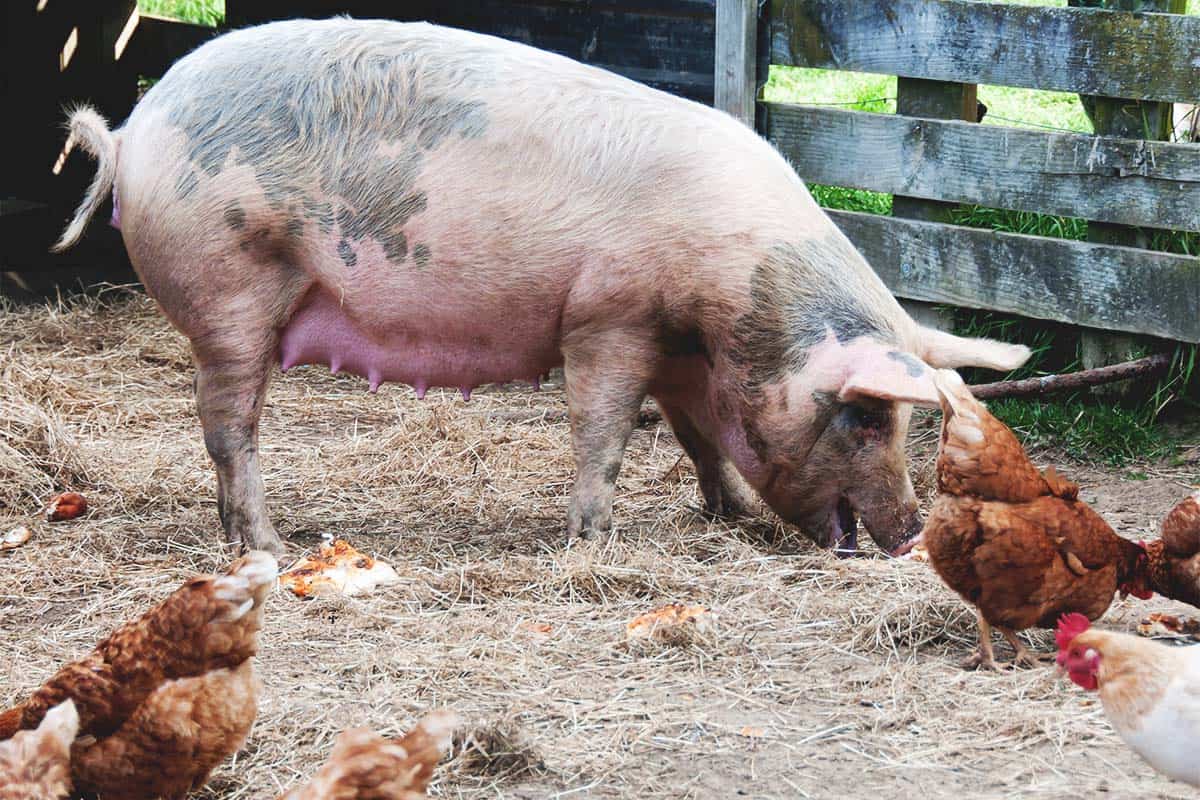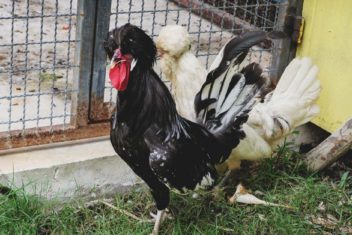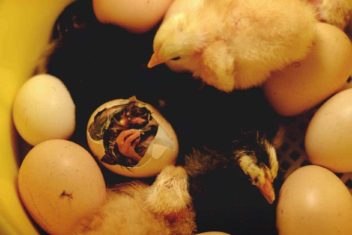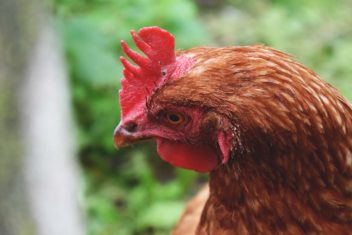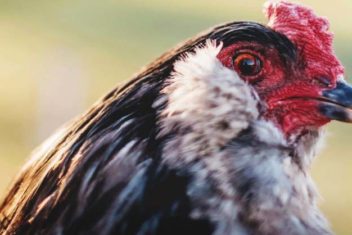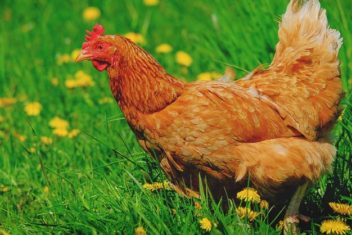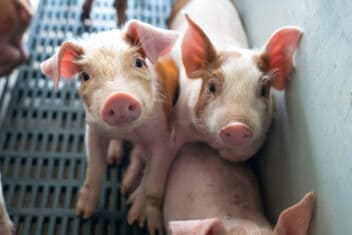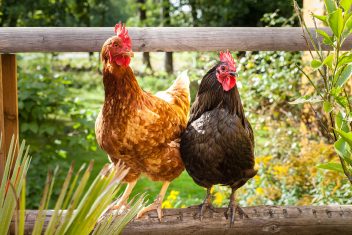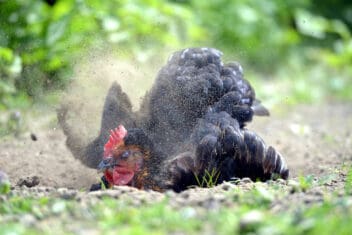Ask anywhere, and you’ll likely get the same response: You can’t raise pigs and chickens together.
You might hear it from the farmer down the street who claims that his pig developed a taste for meat and started attacking his chickens in droves. It could also come from the fresh young homesteader posting in online message boards about the dangers of keeping different types of livestock together.
No matter where you look, there are all kinds of information out there stating that it is a bad idea to raise pigs and chickens together.
However, that is often not the case. In fact, chickens and pigs can and often are raised together – with no ill effects.
There are some things you will want to keep in mind. With a little bit of careful planning and preparation, raising pigs and chickens in the same pen has several distinct benefits.
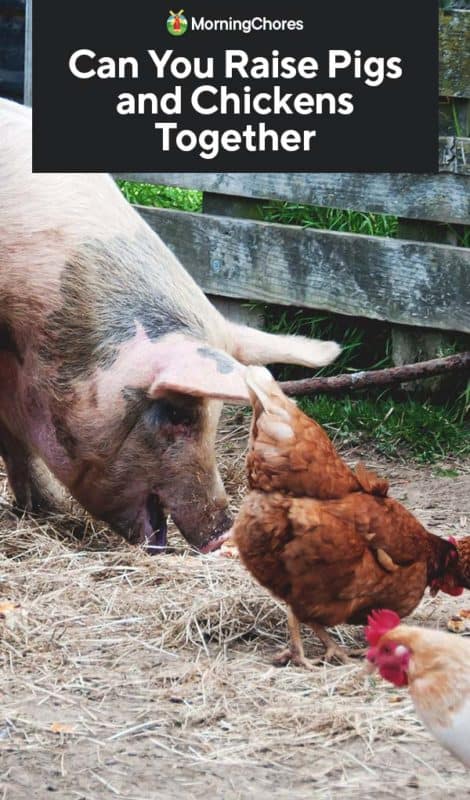
Why You Should Consider Raising Chickens with Pigs
1. Parasite Control
Pigs and chickens are not prone to the same parasites. They also graze and eat in different manners. Chickens will often be able to find bugs, worms, and other pests that the pigs have left behind. In many cases, you may even find that your chickens eat external parasites like lice off the bodies of your pigs.
Similarly, pigs help root up and turn over the soil, pushing some common parasites down into the soil. Chickens benefit from the pigs’ rooting behavior. They will be able to follow closely behind to dig through manure piles and forage for grubs.
Roundworms, the most common intestinal parasites to infect pigs, do not affect the eggs or meat of a chicken. You may even find that, with chickens working beside your pigs, you have fewer flies and bugs on-site because the chickens will eat the larvae.
2. Space Saving
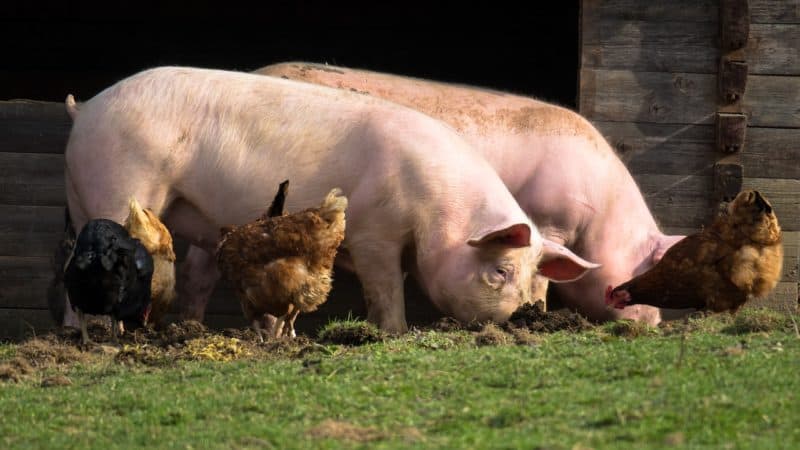
The most obvious benefit of raising chickens with pigs is that you will save a fair amount of space. Your chore time will be dramatically reduced. After all, you only need to head out to one paddock to feed your animals.
You will need to make some concessions in terms of separate designated feeding areas and egg collection areas, though – this can be a problem with pigs – but I’ll get to that in a minute.
In most cases, it is not difficult to keep a pig out of chicken housing that just happens to be in the same pen as your pig housing. There are no issues allowing your chickens to wander back and forth into the pig housing, either.
3. Pasture Utilization

Grazing pigs and chickens together allow for some of the best opportunities for effective pasture utilization. Pigs and hens don’t graze in the same way. Chickens will scratch around, picking out tasty morsels here and there. Pigs, on the other hand, will root, turning over everything in their paths.
The pigs will leave behind manure and rotting food that your chickens will enjoy pecking through, while also exposing tasty grubs and microorganisms to the soil for them, too.
4. Predator Control
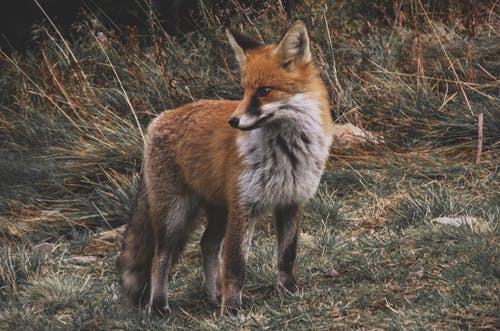
One of the biggest benefits of keeping your pigs and chickens together is that pigs can help to actively deter predators. Chickens are some of the most predator-prone livestock, with hawks, coyotes, dogs, foxes, and weasels all commonly predating your feathered friends.
Luckily, pigs have very few natural predators. You might find a coyote snatching a small piglet here or there. However, it is not likely that a coyote is going to go after a fully-grown sow. Therefore, keeping your pigs and chickens together can deter a wide variety of predators (including airborne predators like hawks).
You don’t even need to do anything special to receive this benefit. The sheer size of your pigs will often be enough to keep predators far away.
What to Keep in Mind When Raising Chicken with Pigs
1. Fencing

When you are building fencing systems for your farm and plan to graze multiple species of animals together, always construct a fence that can keep the wiliest of the two animals contained. In this case, that would definitely be the pig! You will want to make sure your fence is constructed so that your pigs can’t root under it.
Many people use electric fences for their pigs. This can also work with chickens, but keep in mind that they will often be able to walk under your lowest wire or fly over your tallest. Constructing a secondary fence just for your chickens can help, as can using some kind of electric netting instead.
2. Guarding the Feed
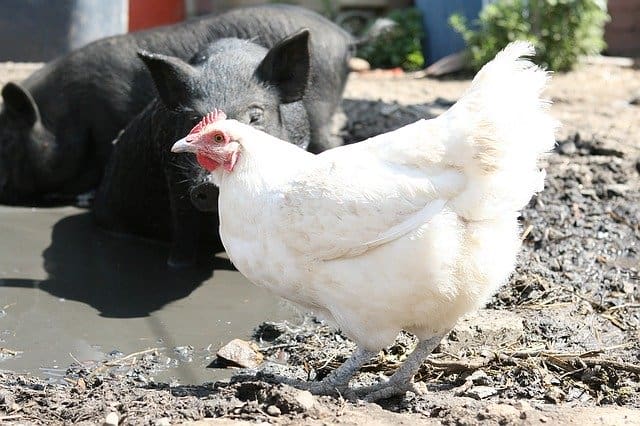
Obviously, it doesn’t really matter if your chickens get into your pig feed. It’s just grain and maybe some scraps, which of course your chickens can eat too. The only problem is if your curious chickens decide to step in front of a hungry pig at feeding time. That can be disastrous for the chicken, to say the least!
However, you do need to find a way to keep your greedy pigs out of your chicken coop (or wherever else you will be feeding your chickens and collecting their eggs). Pigs can and will get into your chicken feed, and they also won’t pass by a freshly laid egg. Therefore, you need to make sure the feed and nesting boxes are well out of reach of your pigs.
Don’t discount the intelligence of a pig, either! If you have a pig get into the feed supply just once, be assured that he is going to do it again, and again, and again. He will remember.
Therefore, you need a foolproof system.
What some people have done that works quite well is to place the chicken coop just outside the fenced-in area for the pigs. You can put all of your animals within a larger page wire perimeter, with a separate electric fence inside the external fence.
Then, just outside of the electric is where you can position the housing for your chickens. By doing this, your chickens can easily amble in and out of the pig pasture. However, the pigs will not be able to get to the chicken’s food and eggs.
Another option is to invest in an automatic door for your chicken coop. These are usually quite small – only chicken-sized – and will keep out an inquisitive full-sized pig. Just bear in mind that smaller pigs or piglets may still be able to get inside (or at least stick their head indoors). You will also need to be mindful of going into and out of the coop, as your pig will likely try to follow.
It should also be noted that some people eschew chicken feed altogether when keeping them with their pigs. This is advisable only during snow-free months when your chickens can get all the nutrients they need from pasture. They will also pick at your pig feed.
3. Aggression
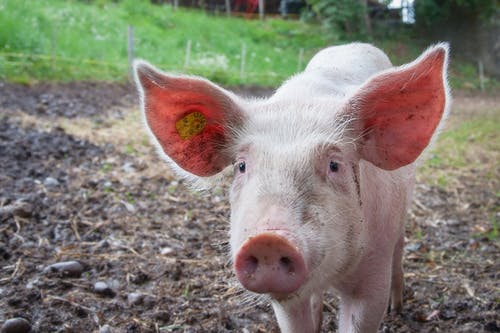
The most obvious reason as to why people avoid keeping chickens with pigs is the issue of aggression.
Nine times out of ten, this won’t be a problem for you. However, if your pigs ever attack and kill one of your chickens, you need to stop housing them together immediately. Once a pig gets a taste for chicken, it won’t ever forget it. You can say goodbye to your flock!
Most instances of aggression can be prevented by ensuring that both your pigs and chickens have adequate space. Usually, a pig will only be able to catch a chicken if it can trap it in a corner and kill it. If you are providing ample space for foraging, this is unlikely to happen.
The breed of the pig also matters. Some breeds, like Guinea Hogs, are incredibly docile. They will never even look twice at your chickens. Others may be a bit more frisky, and you’ll need to keep an eye on them around your chickens.
Something that has worked well for me is to put our pigs with the chickens as soon as they are old enough to leave the barn (just a few weeks after they are born).
They grow up around the chickens and are therefore so used to their presence that they don’t even regard them as food. The biggest concern we had was that our piglets sometimes thought they could play with the chickens just like their littermates! Of course, the chickens weren’t too fond this!
Nevertheless, give plenty of space for both breeds, and aggression should not be an issue. When raising pigs, just remember that a bored pig is a destructive pig – and that applies to any situation.
4. Disease Transfer
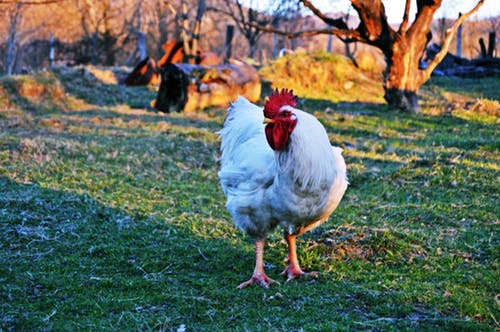
Most of the time, you won’t have to worry about disease transfer between your pigs and chickens. In fact, disease risk will likely be lowered because your chickens will keep down fly populations and stop the parasite life cycle.
However, you need to be careful not to let your chickens graze with pigs that have been given any kind of medication or chemical dewormers. These can often impact your chickens and their eggs.
Very few viruses, bacteria, and other diseases can be crossed from pigs to chickens and vice versa. However, that’s not always the case. There are some that can spread between the two and even jump to humans.
To minimize risk, keep an eye on numbers and space. Given enough space to roam, there is absolutely no problem with keeping chickens and pigs together. The manure load will be spread out over a larger area. However, once you start trying to pack multiple animals into a confined space, you are going to have issues with disease transfer.
Providing plenty of space is a good rule of thumb for any kind of livestock farming. Bear that in mind as you plan for a new pig-chicken conglomeration, too.
Can You Raise Pigs and Chicken Together? Yes!
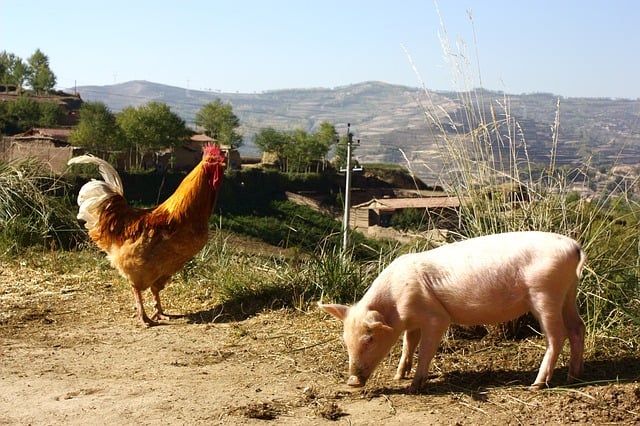
You can raise pigs and chickens together. But of course, do plenty of planning. While pigs and chickens can easily coexist in harmony, there are some steps you must take to ensure both are as healthy, happy, and productive as can be.
Read our related posts on keeping your chickens healthy, and preventing common pig diseases for more information.
